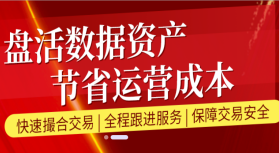从国际经济学的角度理解鸦片战争前后的中国外贸
发布:danielmira | 分类:考研
关于本站
人大经济论坛-经管之家:分享大学、考研、论文、会计、留学、数据、经济学、金融学、管理学、统计学、博弈论、统计年鉴、行业分析包括等相关资源。
经管之家是国内活跃的在线教育咨询平台!
经管之家新媒体交易平台
提供"微信号、微博、抖音、快手、头条、小红书、百家号、企鹅号、UC号、一点资讯"等虚拟账号交易,真正实现买卖双方的共赢。【请点击这里访问】
期刊
- 期刊库 | 马上cssci就要更新 ...
- 期刊库 | 【独家发布】《财 ...
- 期刊库 | 【独家发布】“我 ...
- 期刊库 | 【独家发布】“我 ...
- 期刊库 | 【独家发布】国家 ...
- 期刊库 | 请问Management S ...
- 期刊库 | 英文期刊库
- 核心期刊 | 歧路彷徨:核心期 ...
TOP热门关键词
扫码加入金融交流群 |
From Daniel's Blog: http://danielyoung.blog.sohu.com/
(BTW, I find my "signature" ridiculously large.)
题目取得很大。其实只是我读徐中约先生《中国近代史》时候的一个旁批罢了。考虑到问题的典型性,或许已经有人讨论过相关问题。如果有的话,欢迎大家指点下。
从自由贸易的角度来看鸦片战争是很有意思的。当代的自由贸易理念是与反对倾销等措施并存的。在WTO框架下是允许进口国在进口商品对本国工业造成实质性损害的时候采取safeguard的措施的。当时的来自西方的进口商品显然对中国的传统经济造成了毁灭性的打击。当然当时贸易体系远远没有今天这么成熟,并无这些救济措施可以使用。另外,当时贸易的特色之一就是鸦片贸易占有很大比例。显然,这种贸易按今天的标准看是不受自由贸易原则的保护的。
从国际金融的角度看这个时候的贸易就更有意思了。我们经常假设,如果没有政府的干预,那么市场就会自我纠正达到均衡。在这种假说下,一个可能的机制是什么呢?中国大量进口,出口较少,从而造成大量的经常账户赤字,从而导致本币贬值,从而导致外国商品在本国卖的更贵,而本国商品在外国卖的更便宜,从而减少经常账户赤字,从而达到均衡。从当时中国“白银大量外流”的事实来看,我们国际贸易的结算货币是白银。在银本位的条件下怎么贬值?另外,如果鸦片的贸易是主要的成分的话。鸦片是成瘾性的商品,即便它的价格相对于国内其他商品的价格上升了,这种商品的消费未必然会大幅下降。
我显然还需要增加经济史(包括货币史)和国际经济学的知识才能透彻的讨论这个问题。
下文转贴自WTO官方网站:http://www.wto.org/english/thewto_e/whatis_e/tif_e/agrm8_e.htm
Anti-dumping, subsidies, safeguards: contingencies, etc
Binding tariffs, and applying them equally to all trading partners (most-favoured-nation treatment, or MFN) are key to the smooth flow of trade in goods. The WTO agreements uphold the principles, but they also allow exceptions — in some circumstances. Three of these issues are:
actions taken against dumping (selling at an unfairly low price)
subsidies and special “countervailing” duties to offset the subsidies
emergency measures to limit imports temporarily, designed to “safeguard” domestic industries.(发贴的长度有限制,所以我删掉了部分引用文献)
Safeguards: emergency protection from imports back to top A WTO member may restrict imports of a product temporarily (take “safeguard” actions) if its domestic industry is injured or threatened with injury caused by a surge in imports. Here, the injury has to be serious. Safeguard measures were always available under GATT (Article 19). However, they were infrequently used, some governments preferring to protect their domestic industries through “grey area” measures — using bilateral negotiations outside GATT’s auspices, they persuaded exporting countries to restrain exports “voluntarily” or to agree to other means of sharing markets. Agreements of this kind were reached for a wide range of products: automobiles, steel, and semiconductors, for example. The WTO agreement broke new ground. It prohibits “grey-area” measures, and it sets time limits (a “sunset clause”) on all safeguard actions. The agreement says members must not seek, take or maintain any voluntary export restraints, orderly marketing arrangements or any other similar measures on the export or the import side. The bilateral measures that were not modified to conform with the agreement were phased out at the end of 1998. Countries were allowed to keep one of these measures an extra year (until the end of 1999), but only the European Union — for restrictions on imports of cars from Japan — made use of this provision. An import “surge” justifying safeguard action can be a real increase in imports (an absolute increase); or it can be an increase in the imports’ share of a shrinking market, even if the import quantity has not increased (relative increase). Industries or companies may request safeguard action by their government. The WTO agreement sets out requirements for safeguard investigations by national authorities. The emphasis is on transparency and on following established rules and practices — avoiding arbitrary methods. The authorities conducting investigations have to announce publicly when hearings are to take place and provide other appropriate means for interested parties to present evidence. The evidence must include arguments on whether a measure is in the public interest. The agreement sets out criteria for assessing whether “serious injury” is being caused or threatened, and the factors which must be considered in determining the impact of imports on the domestic industry. When imposed, a safeguard measure should be applied only to the extent necessary to prevent or remedy serious injury and to help the industry concerned to adjust. Where quantitative restrictions (quotas) are imposed, they normally should not reduce the quantities of imports below the annual average for the last three representative years for which statistics are available, unless clear justification is given that a different level is necessary to prevent or remedy serious injury. In principle, safeguard measures cannot be targeted at imports from a particular country. However, the agreement does describe how quotas can be allocated among supplying countries, including in the exceptional circumstance where imports from certain countries have increased disproportionately quickly. A safeguard measure should not last more than four years, although this can be extended up to eight years, subject to a determination by competent national authorities that the measure is needed and that there is evidence the industry is adjusting. Measures imposed for more than a year must be progressively liberalized. When a country restricts imports in order to safeguard its domestic producers, in principle it must give something in return. The agreement says the exporting country (or exporting countries) can seek compensation through consultations. If no agreement is reached the exporting country can retaliate by taking equivalent action — for instance, it can raise tariffs on exports from the country that is enforcing the safeguard measure. In some circumstances, the exporting country has to wait for three years after the safeguard measure was introduced before it can retaliate in this way — i.e. if the measure conforms with the provisions of the agreement and if it is taken as a result of an increase in the quantity of imports from the exporting country. To some extent developing countries’ exports are shielded from safeguard actions. An importing country can only apply a safeguard measure to a product from a developing country if the developing country is supplying more than 3% of the imports of that product, or if developing country members with less than 3% import share collectively account for more than 9% of total imports of the product concerned. The WTO’s Safeguards Committee oversees the operation of the agreement and is responsible for the surveillance of members’ commitments. Governments have to report each phase of a safeguard investigation and related decision-making, and the committee reviews these reports. |
免流量费下载资料----在经管之家app可以下载论坛上的所有资源,并且不额外收取下载高峰期的论坛币。
涵盖所有经管领域的优秀内容----覆盖经济、管理、金融投资、计量统计、数据分析、国贸、财会等专业的学习宝库,各类资料应有尽有。
来自五湖四海的经管达人----已经有上千万的经管人来到这里,你可以找到任何学科方向、有共同话题的朋友。
经管之家(原人大经济论坛),跨越高校的围墙,带你走进经管知识的新世界。
扫描下方二维码下载并注册APP

您可能感兴趣的文章
本站推荐的文章
人气文章
2.转载的文章仅代表原创作者观点,与本站无关。其原创性以及文中陈述文字和内容未经本站证实,本站对该文以及其中全部或者部分内容、文字的真实性、完整性、及时性,不作出任何保证或承若;
3.如本站转载稿涉及版权等问题,请作者及时联系本站,我们会及时处理。



